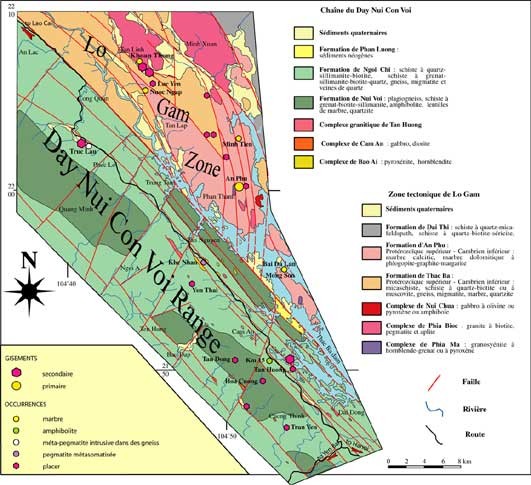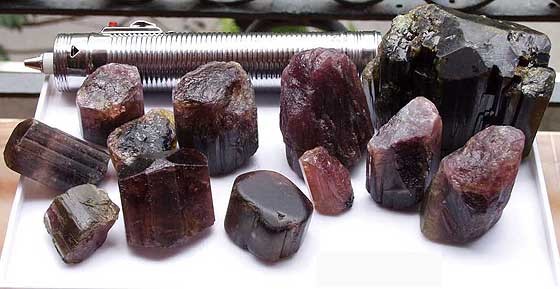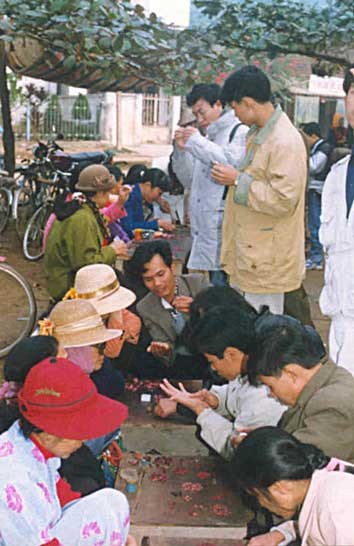Are you fascinated by the dramatic landscapes and vibrant gemstones of Vietnam? SIXT.VN can help you explore the geological wonders of the Yen Bai region with ease. From towering mountains to unique rock formations, Yen Bai’s geology is a captivating story written in stone. Let’s delve into this geological marvel! Discover the hidden gems with our expert travel advice, tailored itineraries, and reliable transportation options.
1. What Makes the Geology of Yen Bai Unique?
The geology of the Yen Bai region is particularly unique due to its location within the Day Nui Con Voi range. This range is characterized by high-grade metamorphic rocks shaped by intense tectonic activity over millions of years. The area’s geological features have led to the formation of valuable gemstone deposits, making it a fascinating subject for geologists and a captivating destination for travelers.
1.1. High-Grade Metamorphic Rocks
The Day Nui Con Voi range primarily consists of high-grade metamorphic rocks such as sillimanite-biotite-garnet gneisses and mica-schists. These rocks have undergone significant changes due to high temperature and pressure, resulting in their unique mineral compositions and textures. The presence of these metamorphic rocks indicates a complex geological history involving intense heat and deformation.
1.2. The Ailao Shan-Red River Shear Zone
One of the most significant geological features influencing the Yen Bai region is the Ailao Shan-Red River shear zone. This major Cenozoic geological discontinuity formed by lateral strike-slip faults has played a crucial role in shaping the landscape and influencing the formation of gemstone deposits. The shear zone’s tectonic activity has caused extensive deformation and metamorphism in the region.
1.3. Gemstone Formation
The unique geological conditions in Yen Bai have led to the formation of valuable gemstone deposits, including rubies and sapphires. These gemstones are found in both primary deposits within metamorphic rocks and secondary deposits in placers. The association of gemstones with specific rock types and geological structures makes Yen Bai a significant region for gemological studies and mining.
 Geological Map of Yen Bai
Geological Map of Yen Bai
2. What Types of Mountains Are Found in Yen Bai?
Yen Bai is dominated by the Day Nui Con Voi range, which translates to the Elephant Mountain Range. These mountains are not volcanic but are instead composed of metamorphic rocks uplifted through tectonic forces. The mountain range features steep slopes, deep valleys, and rugged peaks, making it a visually stunning and challenging terrain to navigate.
2.1. Metamorphic Mountain Range
The Day Nui Con Voi range is a prime example of a metamorphic mountain range. Unlike volcanic mountains formed by eruptive activity or sedimentary mountains built up by layers of sediment, these mountains are the result of intense geological processes that have transformed existing rocks. The metamorphic rocks in the range include gneisses, schists, and marbles, each with its unique characteristics.
2.2. Tectonic Uplift
The uplift of the Day Nui Con Voi range is closely linked to the tectonic activity along the Ailao Shan-Red River shear zone. The lateral movement of tectonic plates has caused compression and uplift, resulting in the formation of the mountain range. This uplift has also exposed valuable mineral deposits, including the gemstone-bearing rocks that make Yen Bai famous.
2.3. Rugged Terrain
The terrain of the Day Nui Con Voi range is characterized by steep slopes and deep valleys, making it a challenging environment for both human settlement and geological exploration. The rugged landscape is a testament to the powerful forces that have shaped the region over millions of years. Despite the challenges, the stunning natural beauty of the mountains attracts adventurers and nature enthusiasts.
3. What Rock Formations Characterize the Yen Bai Region?
The rock formations in the Yen Bai region are diverse and complex, reflecting a long history of geological activity. Key rock types include gneisses, schists, marbles, and amphibolites, each playing a role in the region’s geological story.
3.1. Gneisses
Gneisses are high-grade metamorphic rocks characterized by distinct banding or foliation. In Yen Bai, gneisses such as sillimanite-biotite-garnet gneiss are common, indicating high-temperature and high-pressure metamorphism. These rocks often contain valuable mineral deposits, including sapphires.
3.2. Schists
Schists are another type of metamorphic rock found in Yen Bai, characterized by a layered structure and a high proportion of platy minerals like mica. Mica-schists in the region often contain garnets and other minerals, providing insights into the metamorphic conditions that prevailed during their formation.
3.3. Marbles
Marbles in Yen Bai are metamorphic rocks formed from limestone or dolostone. These marbles are particularly significant as they host ruby deposits. The interaction between the marbles and surrounding rocks during metamorphism has led to the formation of these valuable gemstones.
3.4. Amphibolites
Amphibolites are metamorphic rocks composed primarily of amphibole minerals. In Yen Bai, amphibolites are found interlayered with gneisses and schists. Metasomatism can alter these amphibolites into biotite schists containing sapphires.
4. How Did the Red River Shear Zone Influence the Geology of Yen Bai?
The Red River Shear Zone is a major geological structure that has profoundly influenced the geology of the Yen Bai region. This shear zone, formed by the movement of tectonic plates, has caused significant deformation, metamorphism, and mineralization in the area. The shear zone’s activity has created pathways for fluid flow, leading to the formation of gemstone deposits and other mineral resources.
4.1. Tectonic Deformation
The Red River Shear Zone has caused extensive tectonic deformation in the Yen Bai region. This deformation includes folding, faulting, and shearing of rocks, resulting in complex geological structures. The intense deformation has also led to the formation of metamorphic rocks and the redistribution of mineral resources.
4.2. Metamorphism
The shear zone’s activity has induced high-grade metamorphism in the Yen Bai region. This metamorphism has transformed existing rocks into gneisses, schists, and marbles. The metamorphic processes have also played a role in the formation of gemstone deposits, as the high temperatures and pressures can alter the chemical composition of rocks and create favorable conditions for gemstone growth.
4.3. Mineralization
The Red River Shear Zone has facilitated the movement of fluids through the Earth’s crust, leading to mineralization in the Yen Bai region. These fluids can carry dissolved minerals, which precipitate out in favorable locations, forming ore deposits and gemstone occurrences. The shear zone’s activity has created pathways for these fluids to flow, enhancing the region’s mineral potential.
5. Where Are Rubies and Sapphires Typically Found in Yen Bai?
Rubies and sapphires in Yen Bai are found in both primary and secondary deposits. Primary deposits are hosted by metamorphic rocks, such as marbles and gneisses, while secondary deposits are found in placers, which are gravel and sediment accumulations formed by erosion and transport. The distribution of these gemstones is closely linked to the region’s geological structures and processes.
5.1. Primary Deposits in Marbles
In Yen Bai, rubies are often found in primary deposits within marbles. These marbles are part of the metamorphic rock formations in the Day Nui Con Voi range. The rubies form as a result of metamorphic processes, with the necessary elements and conditions coming together within the marble host rock.
5.2. Primary Deposits in Gneisses
Sapphires, on the other hand, are frequently found in primary deposits within gneisses. These gneisses also form part of the metamorphic rock formations in the region. The sapphires form under different metamorphic conditions compared to rubies, leading to their distinct mineral composition and color.
5.3. Secondary Deposits in Placers
Both rubies and sapphires are found in secondary deposits in placers. These placers are formed by the erosion of primary deposits, with the gemstones being transported and concentrated by streams and rivers. The placers are often located along the Red River Shear Zone, where tectonic activity has enhanced erosion and sediment transport.
 Ruby Mine in Yen Bai
Ruby Mine in Yen Bai
6. How Is Mining Conducted in the Yen Bai Region?
Mining in the Yen Bai region is conducted through both small-scale artisanal mining and more organized commercial operations. The methods used vary depending on the type of deposit being exploited and the resources available. Despite its benefits, mining can pose challenges, including environmental impact and safety concerns. SIXT.VN helps you explore these areas in an environmentally conscious way.
6.1. Artisanal Mining
Artisanal mining is common in Yen Bai, with local communities often involved in the extraction of gemstones from placers. This type of mining typically involves simple tools and techniques, such as hand digging and panning. While artisanal mining can provide livelihoods for local people, it can also have negative environmental impacts if not properly managed.
6.2. Commercial Mining
Commercial mining operations in Yen Bai are more organized and involve larger-scale extraction of gemstones from both primary and secondary deposits. These operations often use heavy machinery and advanced techniques to extract and process the gemstones. Commercial mining can bring economic benefits to the region, but it also requires careful environmental management to minimize its impact.
6.3. Environmental Considerations
Mining activities in Yen Bai can have significant environmental impacts, including deforestation, soil erosion, and water pollution. It is important to implement sustainable mining practices to minimize these impacts and protect the region’s natural resources. Proper environmental management, including reclamation and water treatment, is essential for ensuring the long-term sustainability of mining operations.
7. What Other Gemstones Are Found in the Yen Bai Region Besides Rubies and Sapphires?
Besides rubies and sapphires, the Yen Bai region is also known for other gemstones, including spinel, tourmaline, and quartz crystals. These gemstones add to the region’s geological diversity and economic value. Each gemstone has unique properties and occurs in specific geological settings, making Yen Bai a fascinating area for gemological exploration.
7.1. Spinel
Spinel is a gemstone found in both primary and secondary deposits in Yen Bai. It often occurs in association with rubies and sapphires, particularly in marbles and placers. Spinel crystals are typically octahedral in shape and range in color from red to brownish-red.
7.2. Tourmaline
Tourmaline is another gemstone found in Yen Bai, particularly in alluvial gravels and weathered crusts. Tourmaline crystals exhibit a variety of colors, including green, brown, black, and yellow. Multicolor crystals are also common, adding to the gemstone’s appeal.
7.3. Quartz Crystals
Quartz crystals are abundant and widely distributed in the Yen Bai region. Varieties of quartz include rock crystal, amethyst, and rose quartz. These crystals are found in pegmatites and other geological settings. Amethyst, with its attractive purple color and high transparency, is particularly prized.
 Rough Tourmaline Specimen
Rough Tourmaline Specimen
8. How Can I Explore the Geology of Yen Bai Responsibly?
Exploring the geology of Yen Bai responsibly involves respecting the environment, supporting local communities, and following ethical guidelines. Responsible tourism can help protect the region’s natural resources and ensure that local people benefit from tourism activities. SIXT.VN is committed to promoting responsible tourism in Vietnam.
8.1. Respect the Environment
When exploring the geology of Yen Bai, it is important to minimize your environmental impact. Avoid littering, stay on marked trails, and respect local regulations regarding access to sensitive areas. Support eco-friendly accommodations and tour operators that prioritize environmental conservation.
8.2. Support Local Communities
Supporting local communities is an important aspect of responsible tourism. Purchase goods and services from local businesses, eat at local restaurants, and stay in locally owned accommodations. This helps to ensure that tourism revenue benefits the people who live in the region.
8.3. Follow Ethical Guidelines
Follow ethical guidelines when visiting mining areas or gemstone markets. Do not purchase gemstones from illegal or unsustainable sources. Respect the rights of miners and traders, and be aware of the social and environmental impacts of your purchases.
9. What Are Some Must-See Geological Sites in Yen Bai?
Yen Bai offers several must-see geological sites that showcase the region’s unique landscapes and rock formations. These sites provide opportunities for hiking, sightseeing, and learning about the geology of the area. Consider visiting these sites with SIXT.VN for a seamless and enriching experience.
9.1. Day Nui Con Voi Range
The Day Nui Con Voi range is a must-see destination for anyone interested in the geology of Yen Bai. The range offers stunning views of metamorphic mountains and deep valleys. Hiking and trekking opportunities abound, allowing you to explore the region’s unique rock formations and mineral deposits.
9.2. Tan Huong Ruby Mine
The Tan Huong ruby mine is another important geological site in Yen Bai. While access to the mine may be restricted, the surrounding area offers insights into the geological setting of ruby deposits. You can learn about the mining history and the geological processes that led to the formation of these valuable gemstones.
9.3. Luc Yen Gemstone Market
The Luc Yen gemstone market is a vibrant hub of activity where you can see a variety of gemstones, including rubies, sapphires, spinel, and tourmaline. The market provides an opportunity to learn about the local gem trade and the geological origins of the gemstones. Be sure to follow ethical guidelines when purchasing gemstones.
 Luc Yen Gemstones Market
Luc Yen Gemstones Market
10. How Can SIXT.VN Enhance My Geological Exploration of Yen Bai?
SIXT.VN can significantly enhance your geological exploration of Yen Bai by providing convenient and reliable travel services. From airport transfers to hotel bookings and guided tours, SIXT.VN ensures a seamless and enriching experience. With SIXT.VN, you can focus on exploring the geological wonders of Yen Bai without worrying about the logistics of travel.
10.1. Airport Transfers
SIXT.VN offers convenient airport transfer services to and from Hanoi, making it easy to reach Yen Bai. Our professional drivers will ensure a comfortable and safe journey, allowing you to relax and prepare for your geological exploration.
10.2. Hotel Bookings
SIXT.VN provides a wide range of hotel options in Yen Bai, catering to different budgets and preferences. Whether you prefer a luxury resort or a budget-friendly guesthouse, we can help you find the perfect accommodation for your trip.
10.3. Guided Tours
SIXT.VN offers guided tours of Yen Bai, led by knowledgeable local experts. Our tours can be customized to focus on the geology of the region, providing insights into the rock formations, mineral deposits, and mining history.
10.4. Tailored Itineraries
SIXT.VN specializes in creating tailored itineraries that cater to your specific interests and needs. Whether you are a geologist, a gem enthusiast, or simply a curious traveler, we can design a unique exploration of Yen Bai.
FAQ: Geology of Yen Bai
1. What type of rocks are predominant in Yen Bai?
The predominant rocks in Yen Bai are metamorphic, including gneisses, schists, and marbles.
2. How did the Red River Shear Zone affect Yen Bai’s geology?
It caused tectonic deformation, metamorphism, and mineralization in the region.
3. What gemstones can be found in Yen Bai?
Rubies, sapphires, spinel, tourmaline, and quartz crystals.
4. Where are rubies typically found in Yen Bai?
Rubies are typically found in marbles.
5. Where are sapphires typically found in Yen Bai?
Sapphires are typically found in gneisses and placers.
6. What mining methods are used in Yen Bai?
Artisanal and commercial mining methods are used.
7. Is it safe to explore the geological sites in Yen Bai?
It is generally safe, but following ethical guidelines and respecting the environment is important.
8. How can I minimize my environmental impact while exploring Yen Bai?
Avoid littering, stay on marked trails, and support eco-friendly businesses.
9. Are there guided geological tours available in Yen Bai?
Yes, SIXT.VN offers guided tours led by local experts.
10. What is the Day Nui Con Voi range?
It is a metamorphic mountain range composed of gneisses, schists, and marbles.
Are you ready to uncover the geological secrets of Yen Bai? Let SIXT.VN be your guide to an unforgettable adventure. Our expert services ensure you experience the best of Yen Bai’s natural wonders with ease and comfort.
Ready to explore Yen Bai? Contact SIXT.VN today for personalized travel planning, including airport transfers, hotel bookings, and guided tours.
Address: 260 Cau Giay, Hanoi, Vietnam
Hotline/Whatsapp: +84 986 244 358
Website: SIXT.VN



